There are six photos on this page:
1. Northern Mockingbird, hatchling
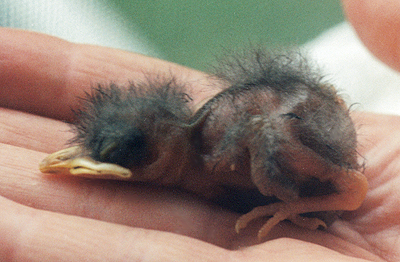 2. Northern Mockingbird, early
nestling
2. Northern Mockingbird, early
nestling
 3. Northern Mockingbird, mid-nestling
3. Northern Mockingbird, mid-nestling
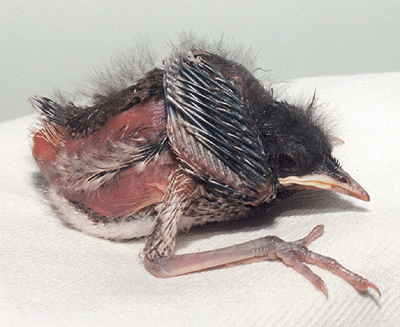 4. Northern Mockingbird, fledgling
4. Northern Mockingbird, fledgling
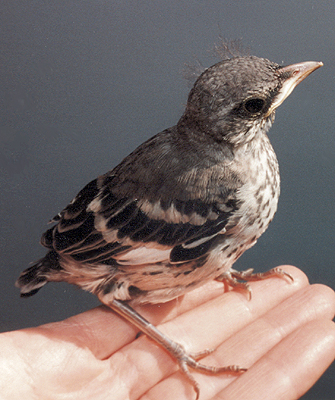 5. Northern Mockingbird,
5. Northern Mockingbird,
support feeding a released juvenile
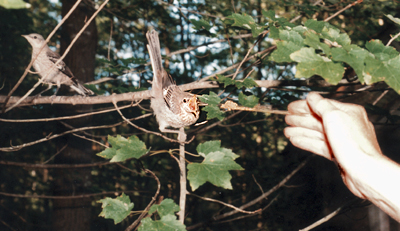 6. Northern Mockingbird,
6. Northern Mockingbird,
support feeding a released juvenile (close-up).
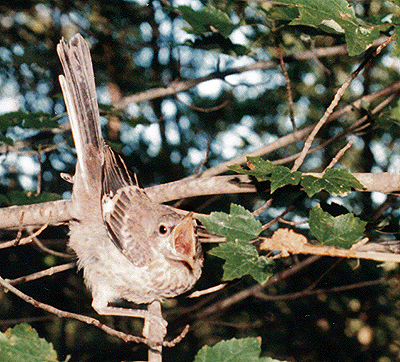
Related to the Gray
Catbird and thought to be a member of the Thrasher family, the Mockingbird is known
for its ability to mimic many different sounds.
Mockingbirds are generally solitary and often seen running
on the ground foraging for bugs. They also eat berries, and sometimes
suet.
This long-tailed bird is a pugnacious defender of its nest
in summer! Mockingbirds nest in trees, bushes, or vines. Both
the male and female build the cup-shaped nest out ot twigs, leaves
and stems, lining it with rootlets and grass. The nest often
includes paper, string, wool, and cotton.
Although appearing to be hardy, these birds are quite slim
bodied, and can decline rapidly when sick or hurt. Nestlings
grow very rapidly, have extremely long bluish gray legs, and
are prone to nutritional problems in captivity unless the diet
is correct.

 [Home]
[Whoooo are we?] [the
Story of Baby Birds] [Myths & Misconceptions]
[Home]
[Whoooo are we?] [the
Story of Baby Birds] [Myths & Misconceptions]
[FAQs] [How you can help] [Photo Gallery] [Contact]
[Donations]
[Shopping]
[Emergency? Click
here.]
This website and all its contents
belong to The Place for Wild Birds, Inc.
Copyright © 2002, all rights reserved. Reproduce only with
permission.
All photographs by Walter S. Bezaniuk. Most illustrations by
Kathleen Frisbie.
Site design by and some illustrations by Sara. |